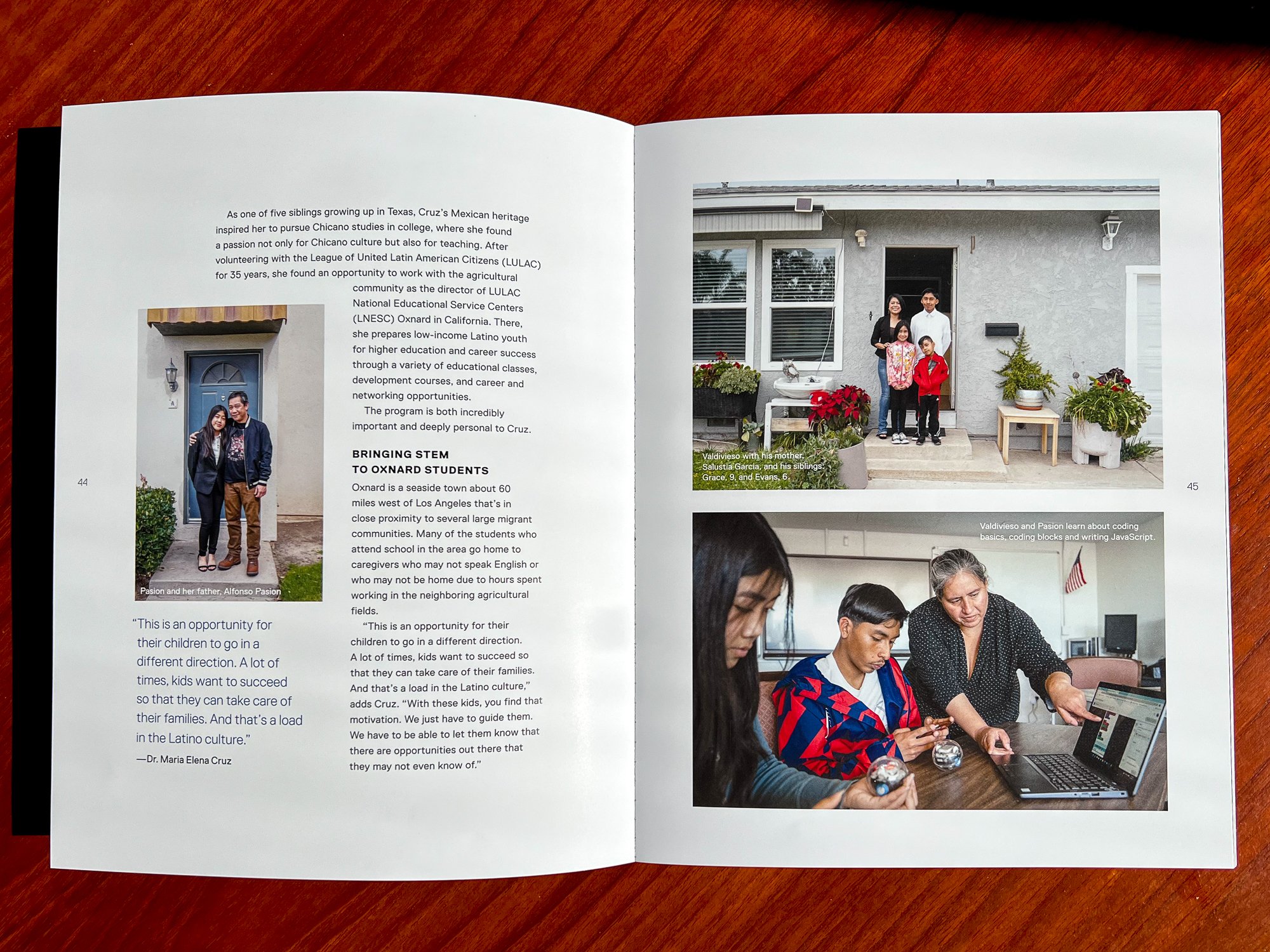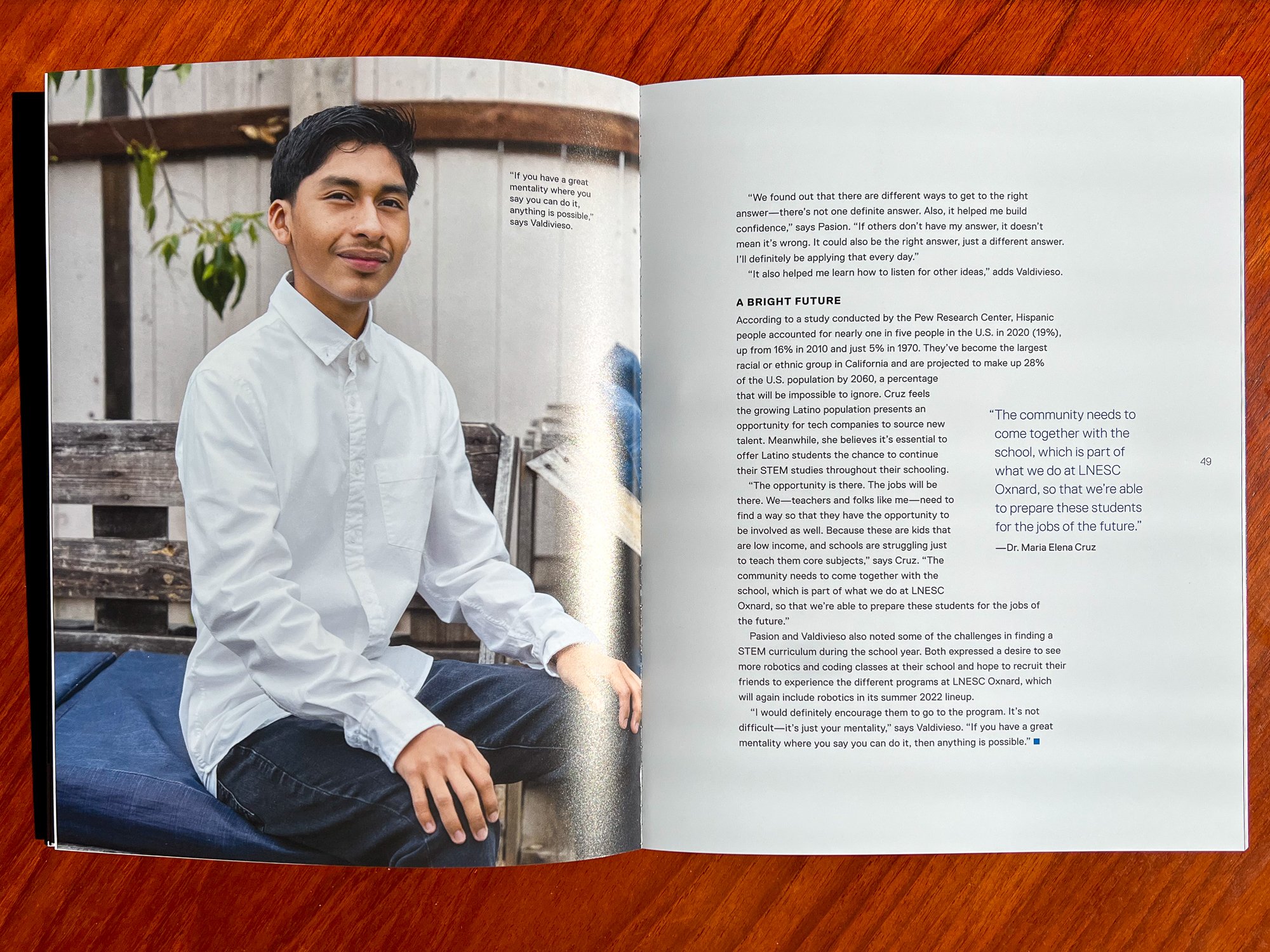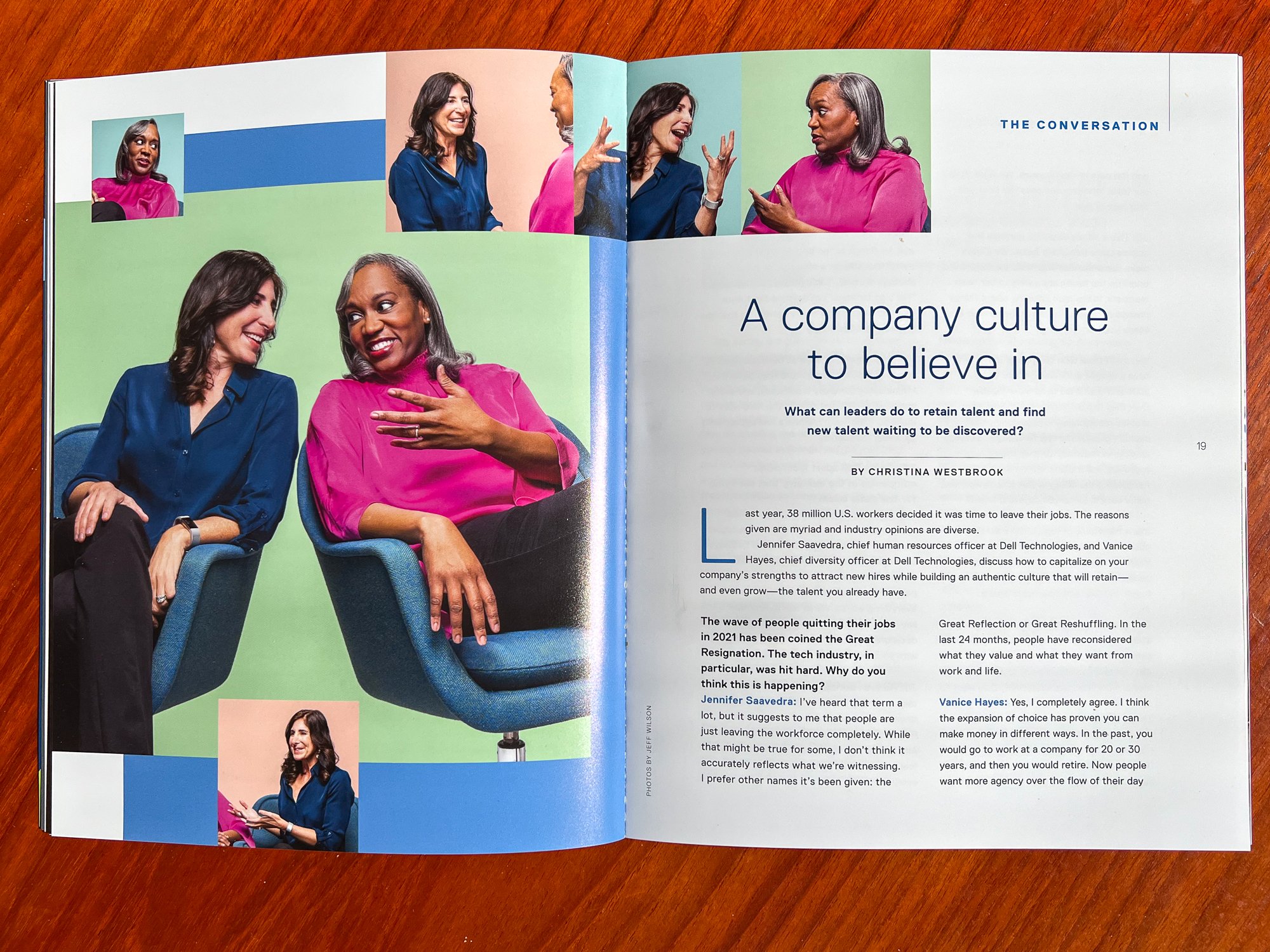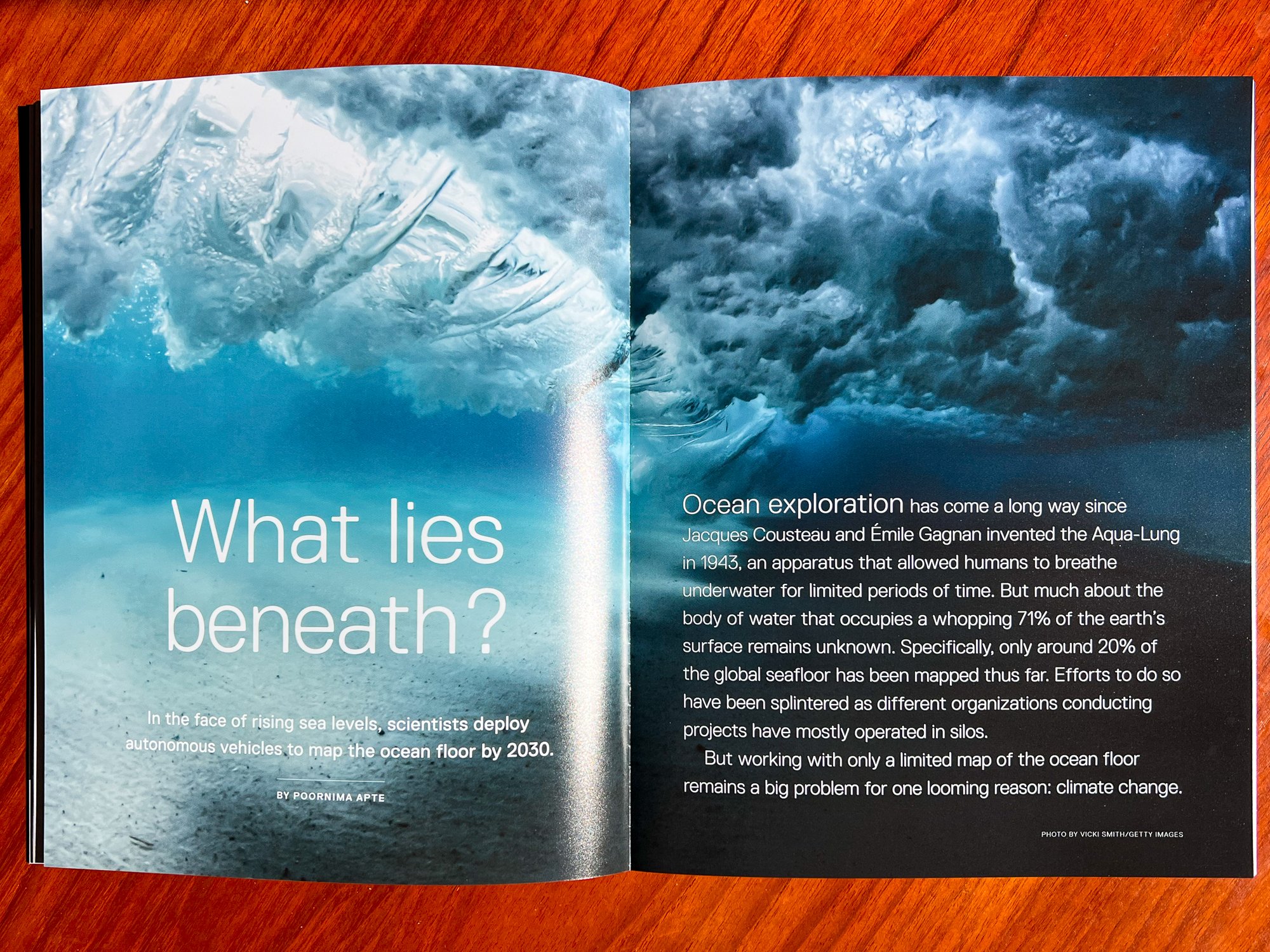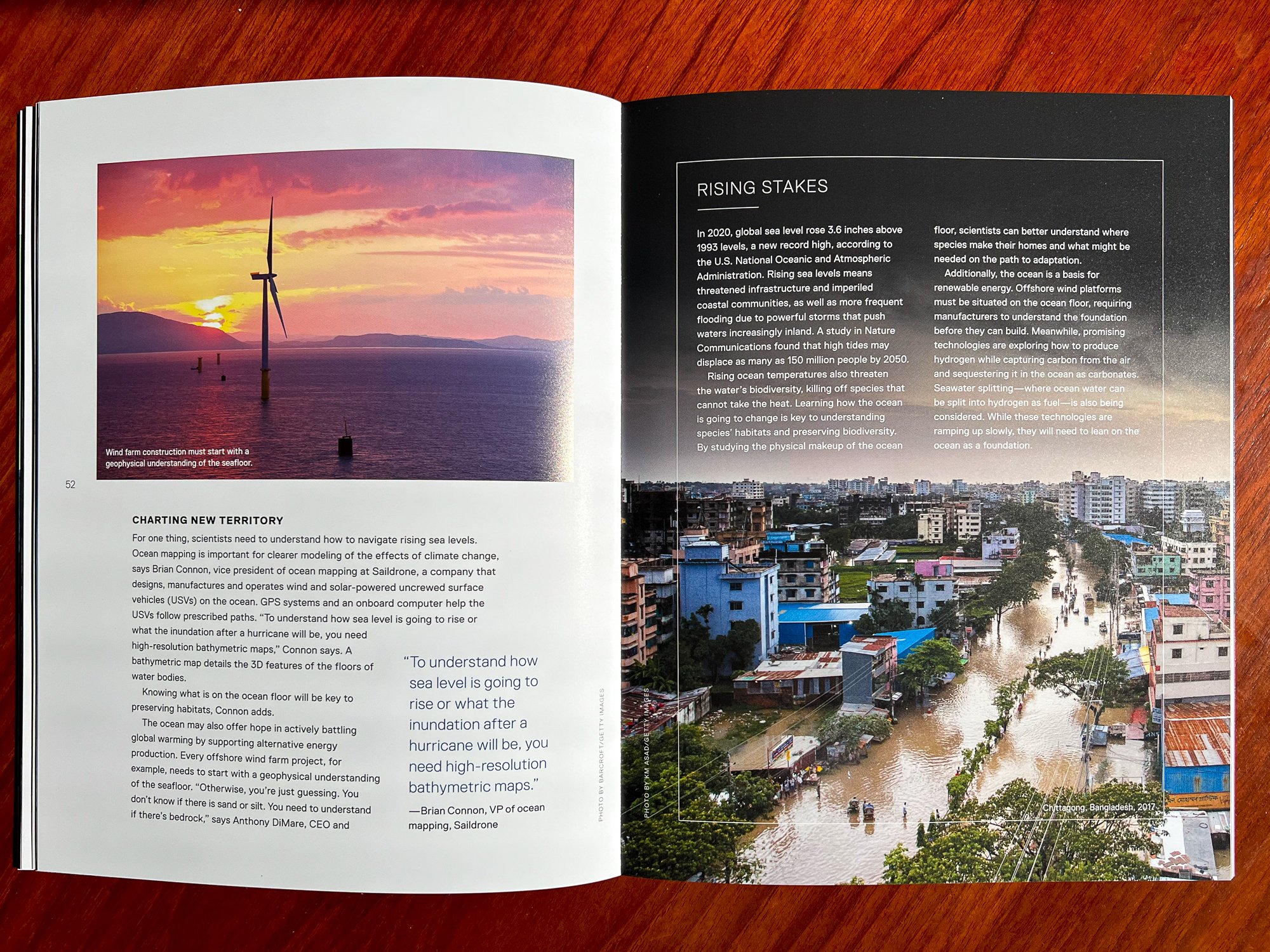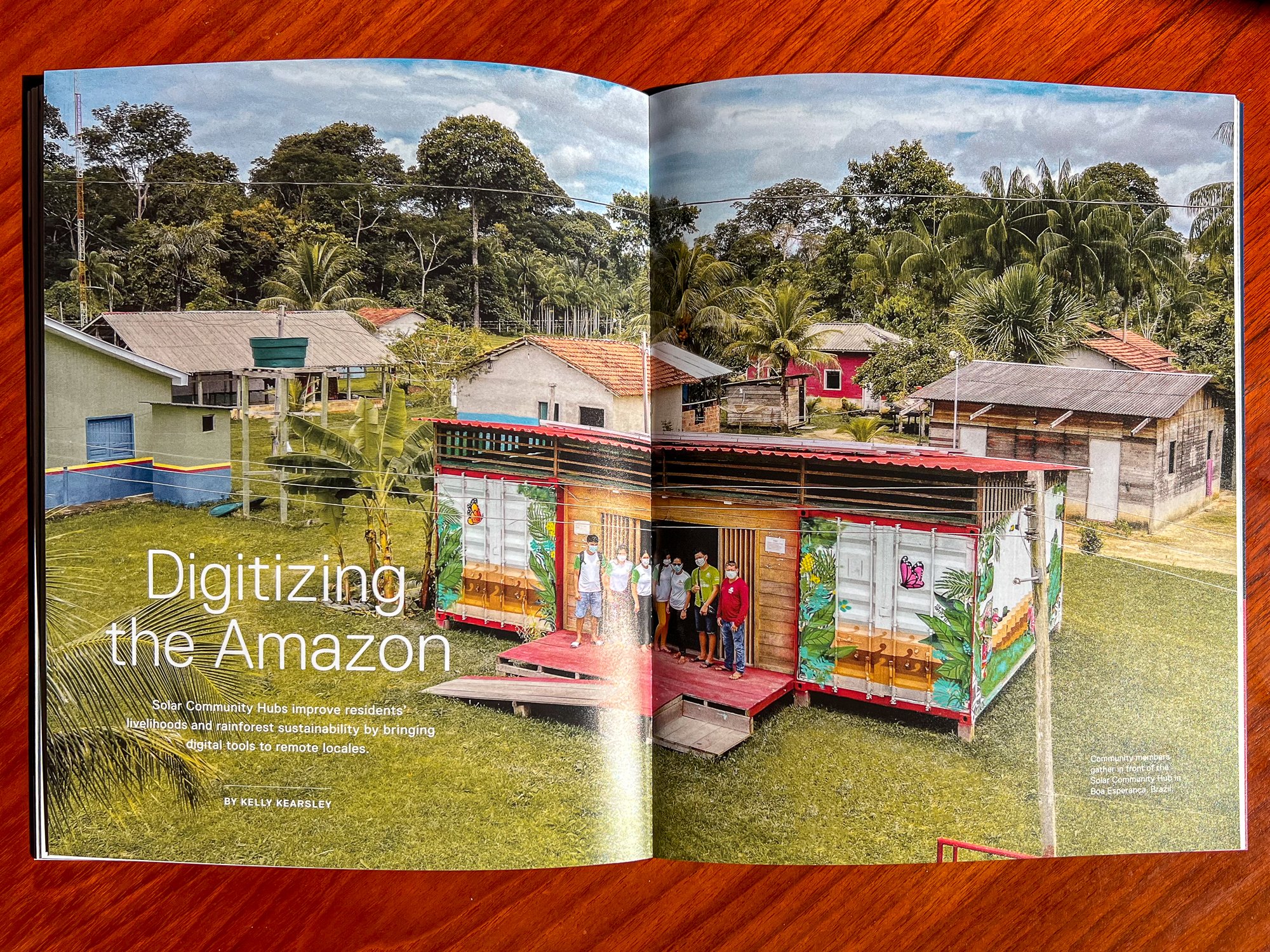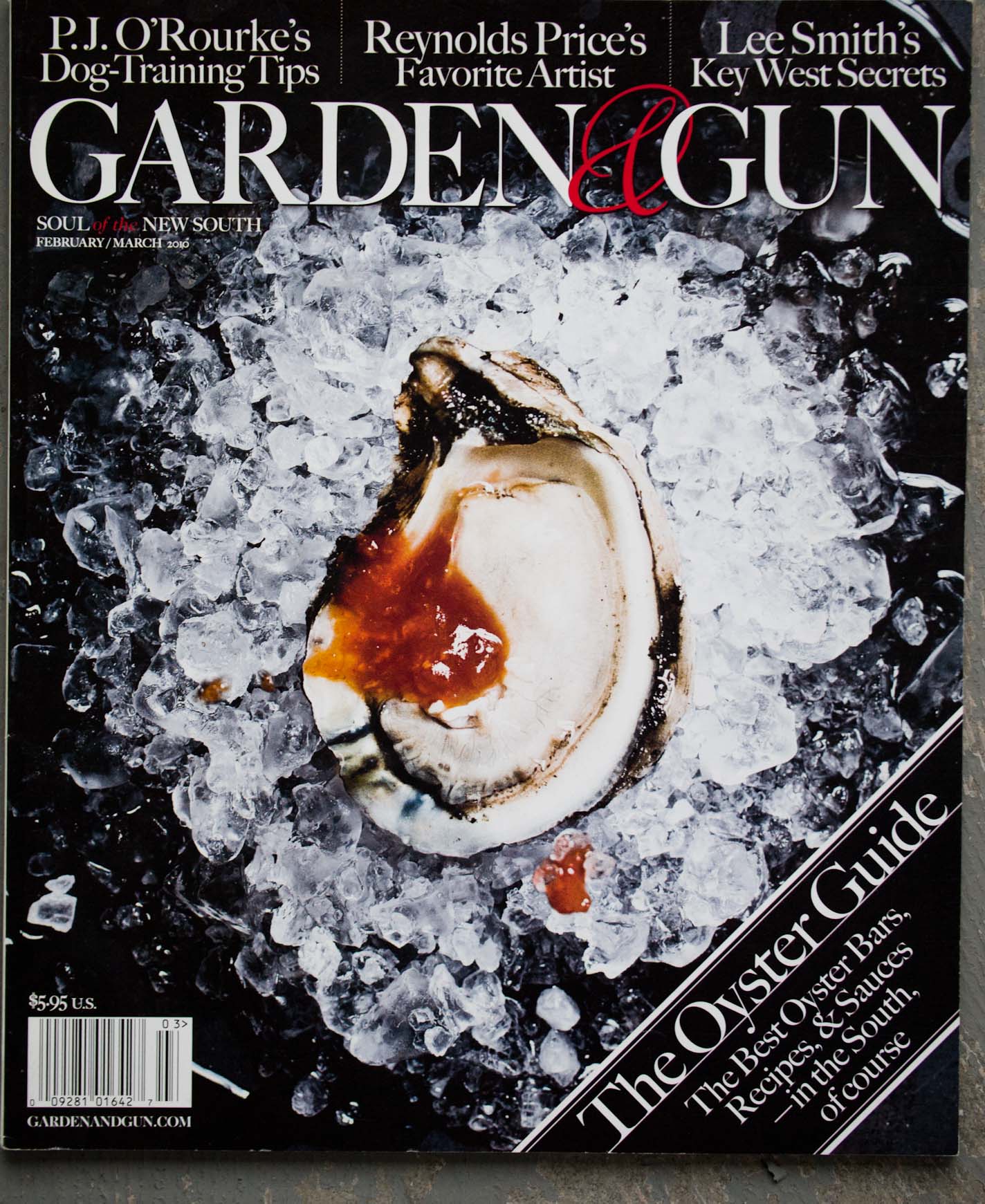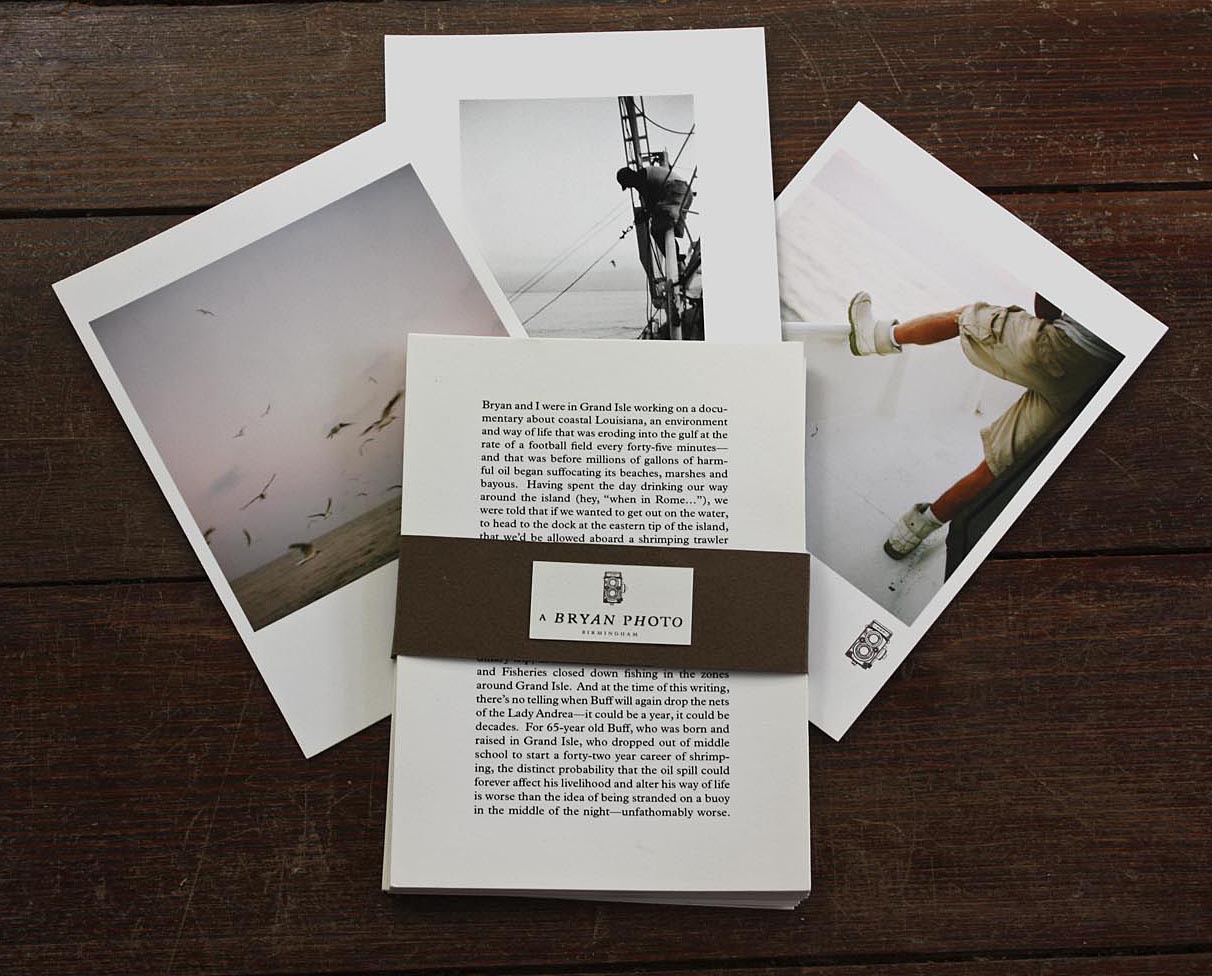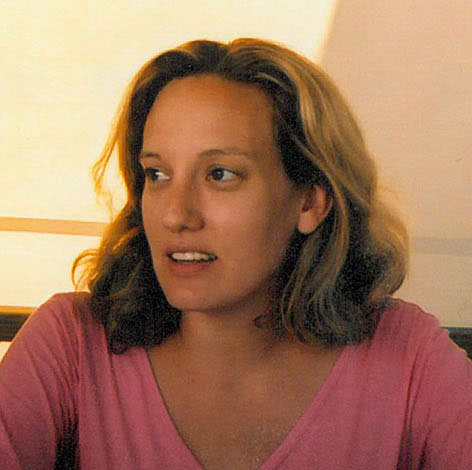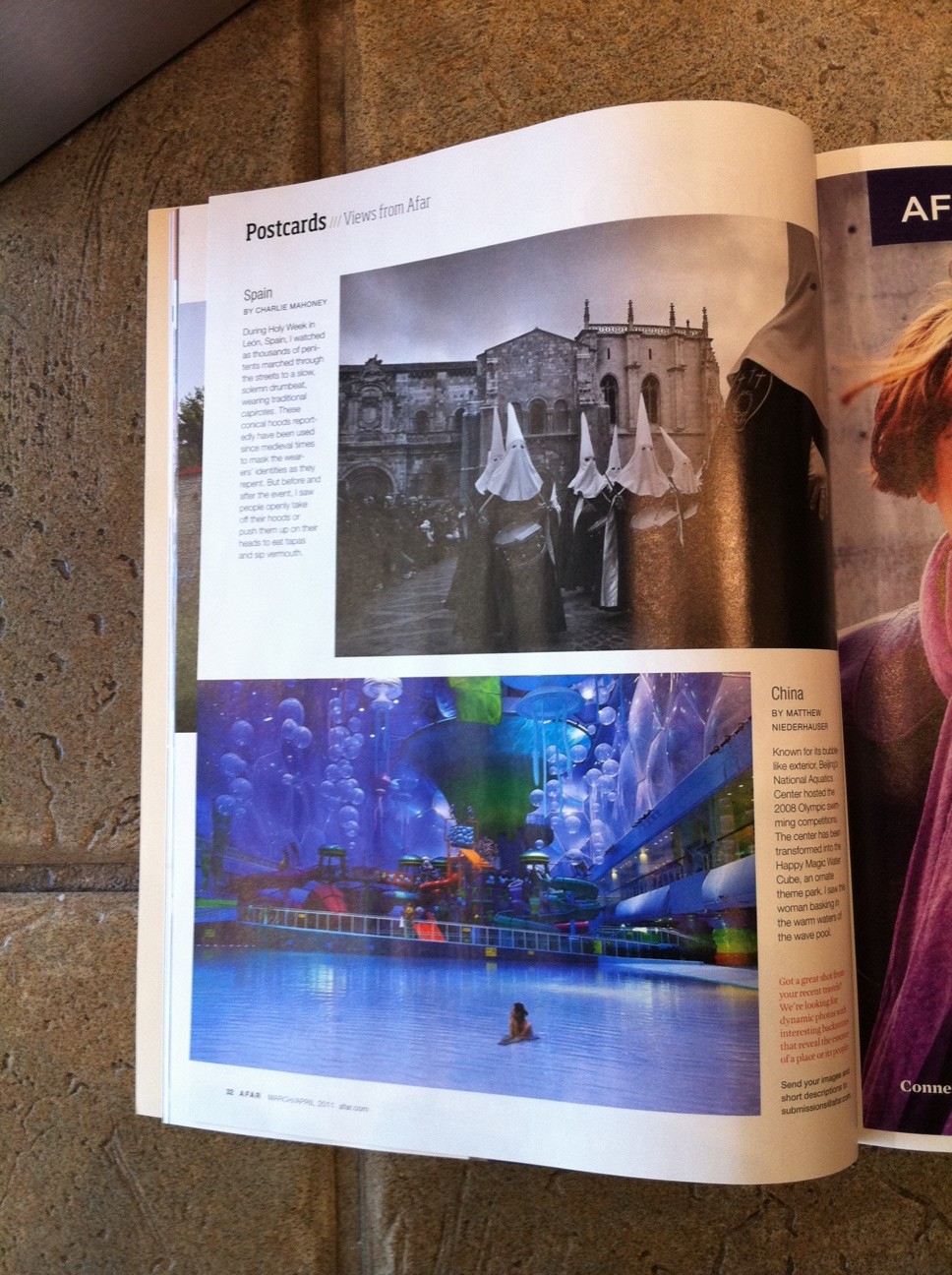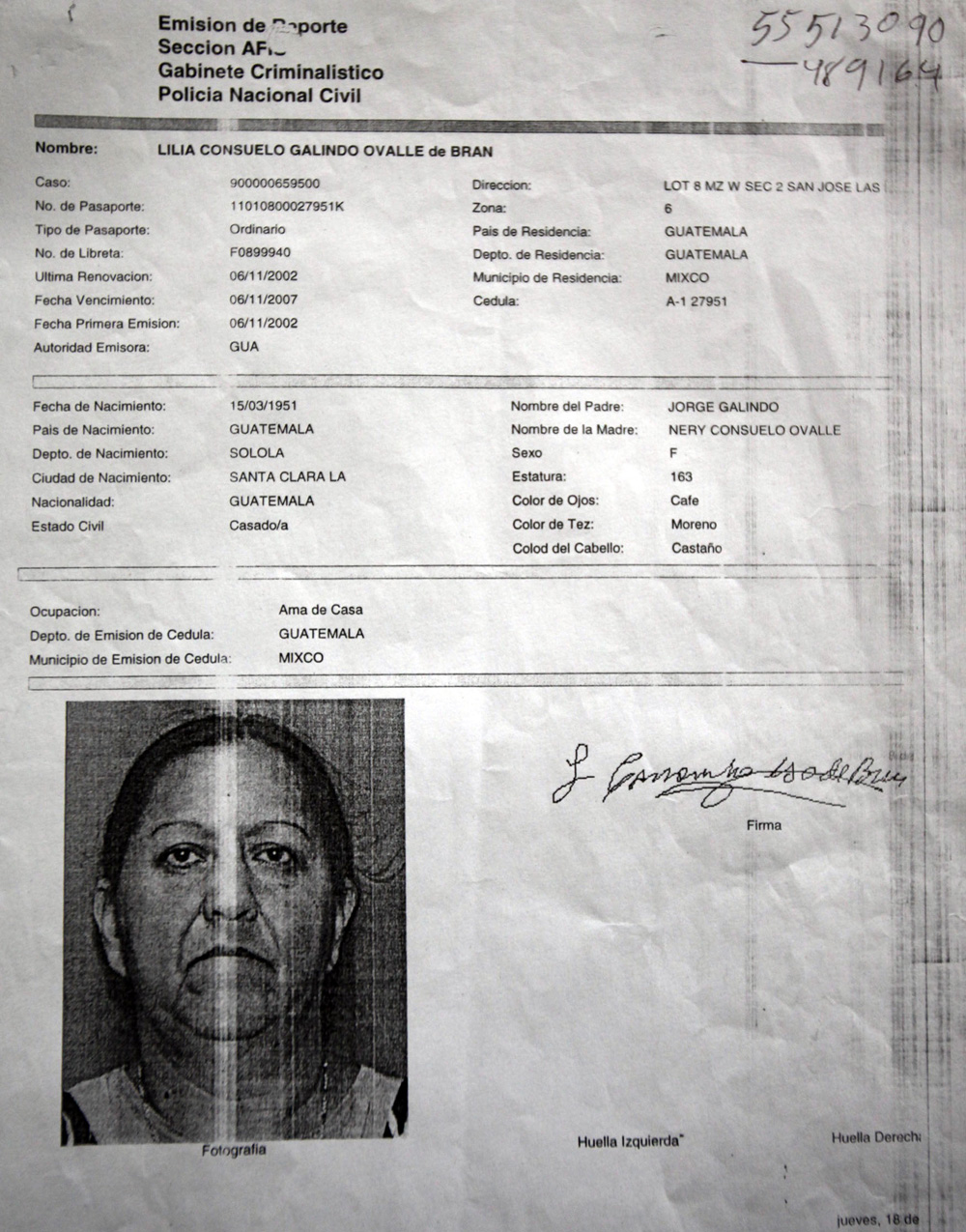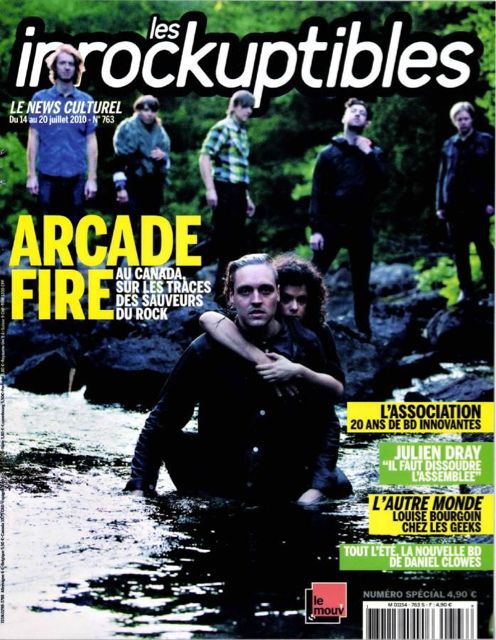Commissioned photography by Ilana Panich-Linsman and Jeff Wilson for Dell’s magazine, Realize. Stock photography by KM Asad.
Dell Technologies, Winter 2019
New work for Dell Technologies’ magazine, “Realize”. The theme of the issue was optimism, which is something I need a daily dose of. Sometimes when you look at the headlines and all the terrible things happening around the world, it’s hard to remember that there are really smart, creative people solving big problems.
A few highlights:
For a story on how emerging technologies are helping solve the planet’s plastic problem, we chose this intense image of people rowing through a river of plastic by Dimitar Dilkoff of @AFP / @theblindkolcho. Lettering by @joelholland_studio
Tony Luong made a beautiful portrait of Dell’s Chief Responsibility Office, Christine Fraser, in Boston.
Photo by @_tonyluong
Lettering by @joelholland_studio
Art direction by @alison_wilkes
Dell Technologies Magazine
New work for Dell and their executive journal, Realize. We commissioned Noah Berger to document work being by @draperlab, @chicostate, and @calfire to use satellite imagery and data to help predict wildfire behavior.
We also got to use some of Noah’s excellent work from the #paradisefire. @noah3929 .
I also commissioned Bob O’Connor to photograph Dell Technologies CTO John Roese.
Story Ideas for Nielsen's New Women Photographer Magazine
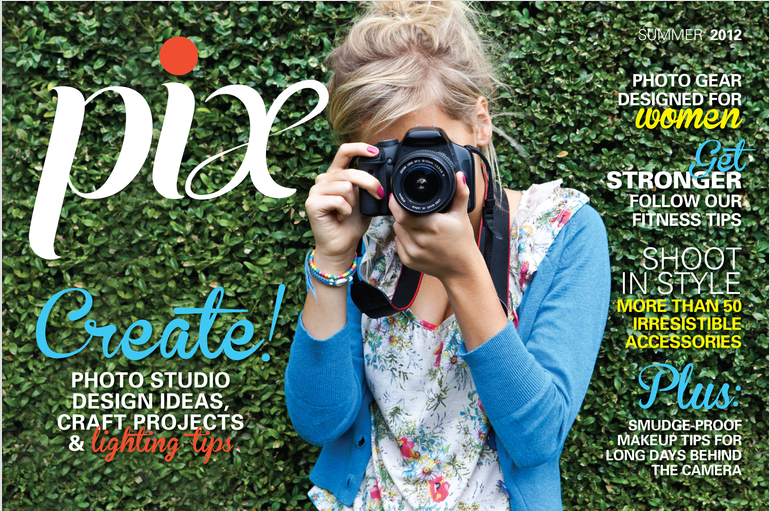
Nielsen and PDN are getting hammered over their new PIX magazine, which is aimed at women photographers. What's the fuss about? More and more women are photographers so it makes sense to have a magazine for them. Or does it? Imagine if there was a new photo mag for men with articles like: “Curbing BO when shooting outdoor sports”, or “Avoiding STDs when having sex with random people all over the world” or, “How to not dress like you’re on safari” or “101 international scarves to accessorize your globe trotting look”. A magazine that gave space to stuff that -- in the grand scheme of things -- doesn't really matter and is based mostly on gender-based stereotypes. Would guys embrace it with open arms? Or would they make fun of it?
Well, instead of raining on Nielsen’s parade even more, let’s make this constructive.
I’d like to offer some story ideas for them. Hopefully they are already working on some of these, as none of them are really revolutionary.
- How to handle the dangers that women face when shooting in countries that are hostile to women and women’s rights.
- Maintaining a successful business while raising a family. Women still carry most of the responsibility of child care, and as freelancers, this can seriously impact a female photographer’s ability to work. How can you schedule child care when you aren’t sure which days you will be working? How do successful female entrepreneurs handle this?
- Thoughtful editorials on why there are not as many women photographers as there are men, and what can be done to change that.
- In-depth profiles on famous and not so well-known female photographers throughout history.
All that said, wouldn’t all of these stories be great to see in a regular issue of Photo District News? (In fact, the most recent issue of PDN does include a story on work life balance!) Which begs the question, “Why even have a separate magazine for women photographers?” I would love to see the market research and business plan that went into this launch. Obviously they crunched the numbers and saw a business opportunity. But who exactly is the target audience?
Perhaps they are building this magazine for a totally different audience than is attracted to PDN. Maybe they are going strictly after the amateur and prosumer, people who just aren’t that interested in the same issues that pros face. Surely there is a huge market there.
Regardless of the target audience, I do think Nielsen has an opportunity to write about real issues of importance facing female photographers, and I hope they make the most of it.
Deadline approaching! Foam Magazine Talent Call
 If you are a photographer between 18 and 35 years old, consider applying for Foam Magazine's Talent Call.
If you are a photographer between 18 and 35 years old, consider applying for Foam Magazine's Talent Call.
The Foam annual Talent Call is designed to showcase exceptional young photographers from all over the world. Every year, Foam Magazine dedicates its Fall issue to publishing the work of 15 selected talents. It is a springboard into the international photography industry for these artists, giving them international recognition and acclaim. Last year the winning portfolios were chosen from over 800 submissions worldwide. We look forward to seeing what 2012 has to offer!
Submit work by April 16 for consideration.
Call for Submissions - Palm Springs Photo Stories
 I'm looking for photo essays on Palm Springs and the surrounding areas (Salton Sea, Slab City, etc). Especially interested in images that show people doing things (not so interested in landscapes). I know there are a lot of quirky characters in those areas, and am open to seeing photos of them, but also want to see some luxury and relaxation.
This is for a soon-to-be-launched tablet travel magazine. The magazine skews higher end/luxury, but we are dedicated to showing authentic experiences, so embrace photojournalism as well as lifestyle and travel photography.
I'm looking for photo essays on Palm Springs and the surrounding areas (Salton Sea, Slab City, etc). Especially interested in images that show people doing things (not so interested in landscapes). I know there are a lot of quirky characters in those areas, and am open to seeing photos of them, but also want to see some luxury and relaxation.
This is for a soon-to-be-launched tablet travel magazine. The magazine skews higher end/luxury, but we are dedicated to showing authentic experiences, so embrace photojournalism as well as lifestyle and travel photography.
I will be sending out other photo needs via my mailing list. Please sign up (sign up form is on the home page, bottom right) if you would like to receive these. And please share this post with any colleagues who may have work to share.
To submit your work for consideration, please email me a link (no attachments please). I need captions in order to know what it is I'm looking at. Thanks!
I will post all future calls for submissions to my twitter and my facebook professional page, so please follow me there too to get the latest requests.
(photo by me)
Q&A with Garden & Gun's Maggie Brett Kennedy
Why do you think Garden & Gun is at the top of so many people’s “dream clients” lists.
That’s amazing. We’re fortunate that photography is a focus of the magazine’s design. A lot of full page images and great paper stock to ensure high quality reproduction. Our readers let us know how much they relate to the photography each issue. We’ve always been a photo friendly publication.
You have hired Peter Frank Edwards for many stories, and one of those recently won a James Beard Award. Can you describe what it is in Frank’s work that keeps you coming back? How do you two work together? Is it a collaborative process?
I’ve had the pleasure of working with Peter Frank Edwards since the very first issue of Garden & Gun (Spring 2007). He’s from the South, spent his life in the outdoors, and previously was a fisherman and sous chef. Peter Frank Edwards IS Garden & Gun! He’s covered everything from hole-in-the-wall barbecue joints to traditional foxhunting and continues to get excited by every assignment. He lives the pages of the magazine so really gets what we’re all about.
It is very much a collaborative process. There is a level of trust after working together for many years. I know he is going to find the creative angle with each assignment and bring back the unexpected. I always look forward to his tales from the road. (Read more about their collaboration in my Q&A with Peter Frank Edwards).
You use such an amazing variety of types of photographers, that it is hard to pigeonhole Garden & Gun as having a particular style. How do you describe the visual aesthetic to people?
I like to work with a mix of national photographers and Southern-based talent in each issue and try to deliver the unexpected whether it’s for the front or back of the magazine or a feature.
It’s a balance between seasoned well-known shooters and up-and-coming photographers. We always strive for images that communicate a sense of place. Images that make you want to be there, in that moment. We like lots of natural light and rarely incorporate conceptual photography.
Walk us through a “typical” day at work.
Garden & Gun has a small staff so each component of photography and the overall process is very hands on. The magazine contains a wide variety of content so each day is filled with assignments ranging from Southern food and chefs, hunting and fishing, architecture and interiors, portraiture, music, you name it.
The magazine covers a wide editorial range and incorporates a high/low mix of content. For example, a profile of actress Anna Camp or a new modern architectural project verses gritty and soulful juke joints or frogging in Louisiana. Every day is exciting and keeps me on my toes. I also like to set aside time each week to respond to inquiries, research photographer’s new work, etc.
How many print and email promotions do you receive in an average week? Have any stood out to you lately, enough to where you actually contacted the photographer?
I receive about 30 promos a week. Bryan Johnson sent me a promo that turned into an online photo essay for G&G. The content was perfect for us: http://gardenandgun.com/newsletter/spill-one-year-later.
When being promoted to, do you prefer print or email?
Both are great, so however the photographer is most comfortable showcasing their work. I’m old school and still love print. I continue to hold onto those real standout print promos. Witty design on quality paper with gorgeous photographs always excites me.
Do you have any pet peeves when it comes to the marketing materials photographers send you?
Do not send emails with large file attachments. Be familiar with the magazine’s content and visual style and send an appropriate selection of photos. I prefer a tighter, well-constructed edit rather than a large quantity of work. Websites should be easy to navigate and show me images immediately.
What are some of your favorite ways to discover new photographers?
All types of blogs (photo, galleries, designers, magazines, etc.), chatting with people in the industry, those standout promos I receive, and an occasional portfolio review.
Questions from photographers
1. Is it OK to call Photo Editors to follow up after sending a promo?
Email follow up is great and always easier than phone calls.
2. When I send an email, should it be in a email newsletter format or will a simple note saying what I've been up to suffice?
Either is fine. Be sure your work is easy to view.
3. Do you take a chance on photographers just starting out fresh out of school?
Yes.
4. What is the best way to get noticed by a photo editor and ultimately hired to shoot a job?
Develop your own style, have confidence in your work, and do your research on each publication you approach. Send quarterly updates about your projects, travels, etc. I just worked with a photographer for the first time I’ve been corresponding with for two years. Everything has to fall into place before that project can become a reality.
5. What are some of the qualities of an ideal photographer to work with?
Passionate about their work, down-to-earth, excited to tackle all kinds of challenges, professional, someone who thinks outside of the box and brings something new and fresh to the table visually.
6. Can you share some names of some photographers whose work you are inspired by?
I love to look at classic Southern icons (Jane Rule Burdine, William Christenberry, Sally Mann) as well as current shooters (Marcus Nilsson, Peggy Sirota, Andrea Fazzari, Ditte Isager, Trujillo- Paumier).
7. What is the most interesting shoot, photographically, so far?
The next one...
Q&A with Travel Photographer Peter Frank Edwards
Tell us about how your relationship began with Garden & Gun. Did they contact you?
Garden & Gun contacted me when they were in the planning stages for the launch of the magazine -- well before the first issue came out. As I recall, at that time there was no real photo or art department. They sort of "reorganized" after a couple of issues, made some staff changes. I've enjoyed a great relationship with them.
Can you describe your work process with Director of Photography Maggie Brett Kennedy? Do you collaborate on ideas? is the editing process collaborative?
Yes -- we do collaborate on ideas -- which can be anything from a quick phone call to bouncing sketches back and forth. We talk less about composition and set-ups and more about texture, color, mood, etc. She is interested in and respects photographers' points of view and is genuinely interested in the creative processes of each photographer she works with. I always feel like they are hiring me (or other photographers) to "do what we do" -- there's a lot of trust in that. The edit is also collaborative, and she's always interested in what I think tells the story or what I'd like to see published.
What's the most challenging shoot you've done for them and why?
One of the most technically challenging shoots was an assignment covering the oil spill. They sent me to Louisiana right as the oil was just starting to show up in the marshes. I had a lot of ground to cover in a very short period of time, and because of the time frame there was no opportunity to get official press credentials. I'd show up places, and even though we had called ahead and had a contact at an area or location, the National Guard or local police would not let me in. In addition, it was about 100 degrees and 100 percent humidity, and all the camera gear was fogged up and would literally drip with condensation. I had one little camera that seemed immune to this problem, probably because it's more plastic and less metal and glass.
What's your all time favorite story?
I worked on a piece about a North Carolina BBQ road trip with writer Sandy Lang -- we got the call on a Tuesday and we were on the road Friday.
It was a very stream of consciousness couple of days -- we met some characters, ate tons of great food -- and it was one of those assignments where you feel like you're getting gold at every click of the shutter.
Why do you think G&G is on everyone's dream client list right now?
Both Maggie and Marshall McKinney (art director) give photographers a lot of creative freedom, and you can see that come through in the stories and the single images. They treat the work well and with respect -- they are champions of great imagery.
___________________________________
A former fish monger and sous chef with a degree in anthropology, Frank was born and raised in coastal South Carolina. During college, he practiced photography at a camera shop and was soon off to Europe – and ultimately to Berlin – where he shot artist portraits and projects before returning to the American South, to live again by the ocean. In his photography, Frank mixes his passions for travel, people and food. When not on location, he splits time between his Charleston home and a cottage in Maine.
In Praise of AFAR Magazine
Can we just talk about how gorgeous AFAR Magazine is? I was stuck at the airport for a couple of hours and flipped through as many magazines as I could. I'm a little late chiming in on the lovefest (it's been named the best travel magazine by pretty much everyone) but I am smitten. AFAR really stands out on the newsstand. Photo editor Tara Guertin uses photojournalistic travel photography to convey a true sense of what it's like to immerse oneself in another culture. Destinations still appear pretty and desirable, but they seem real and approachable. And unlike a lot of other travel photojournalism, there were none of those visual cliches that clutter the genre (wide eyed children gaping at the camera, abandoned buildings, etc). They even use stock photography in a way that makes the images seem fresh and new (a grid of bridges around the world comes to mind).
Here are some of my favorite images from the March/April 2011 issue:
The "Postcards" section in the front also features great images on the photojournalism end of the spectrum.
Interested in contributing to AFAR? These writer's guidelines should be helpful to photographers too.
Q&A with Erin Siegal: Tapping Social Networks to Fund Investigative Journalism
In a previous post I talked about how journalists and artists can raise money to cover projects through crowd funding. Erin Siegal, a photographer, multimedia artist and journalist has been working on a story on corruption in the Guatemalan adoption industry. She used kickstarter.com to raise the money necessary to finish the story. Below is a Q&A with her about the process and why she didn't go the traditional route.
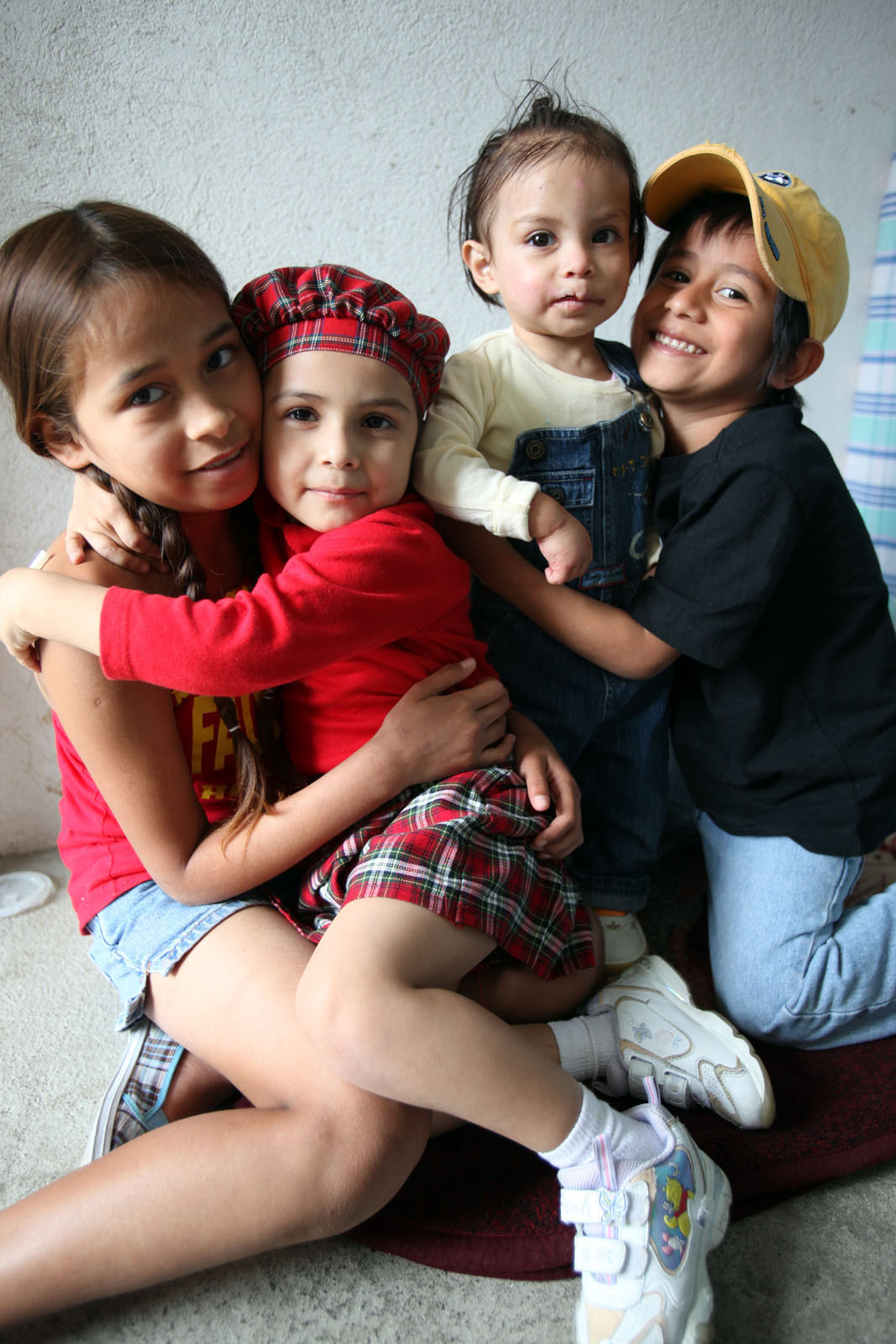
You've been working on Finding Fernanda for over two years. Did you start out thinking it would be a photo essay? If so, was your goal to get it published online or in a magazine?
I fell into the world of adoption corruption entirely by accident, and as a result of being a photographer. My sister and I went to Guatemala on vacation in
December 2007. While waiting for our plane in the Guatemala City airport, we were surrounded by Americans leaving with newly adopted children. On a visual level, it was a very striking scene because of the trans-racial element as well as the sheer number of children leaving. I was immediately curious to learn about what was happening. I decided to do a little research to see if there was a story angle I could pitch to my photo agency, Redux Pictures.
Back in the States, I started reading all the English language clips I could find about Guatemalan adoptions. To my surprise, many of the stories focused on issues of corruption like kidnapping, baby-selling, and bribery. There were numerous clips from 2005-2007, and when I watched the six-part Dateline special "To Catch a Baby Broker," my curiosity was piqued. I just didn't understand how the abuses could keep occurring, apparently over and over again. Where was the oversight? Was the US government turning a blind eye to proven child trafficking?
When I thought about how to photograph the story, it seemed like an immense amount of time and reporting was needed. How else could I start to understand corruption that possibly was rooted in organized crime? I'd also been creeping towards a point in my photo work where I wanted to explore multi-faceted, complex human-rights based issues that couldn't be told with just pictures. I wanted to write the text to go with my photographs. The problem was that I didn't know how, or where, to start.
Columbia University offers a Master's degree in journalism with an investigative specialization, the Stabile Center for Investigative Journalism. The Stabile Center takes about 12 students each year. The application requires a pitch for a year-long thesis investigation, so I proposed an examination into the political side of international adoption. Who was calling the shots, and why? What purpose did a lack of oversight serve?
In August 2008, I started as a Stabile fellow and my life became engulfed in adoption fraud. It was a fascinatingly gray subject, with no black or white. A few months after starting my research, I came across the poignant, incredible story of Betsy Emanuel and Mildred Alvarado, the two mothers whose stories are detailed in Finding Fernanda. I was able to spend a month living in Guatemala City generously funded by the Stabile Center in January 2009, and have returned since, paying my own way.
At first, I imagined pitching to Rolling Stone or Harper's. Yet boiling it down to 3,000 words seemed like a disservice. Hundreds of people (including sources who need anonymity for security reasons) talked to me, and I wanted to honor their trust and faith. A book made sense, though I didn't initially set out to write one. The story simply demanded it.
Did you approach any publications, foundations or NGOs about funding the story?
This past January, I immediately started hustling for funding.
The idea of partnering with an NGO crossed my mind, but accepting funding from an advocacy group would obviously damage the credibility of the reporting. The fundraising process hasn't been easy: it's a full-time job to finish reporting and writing a 300-page book in 8 months. Finding the time to apply for grants and awards, learn about marketing/sales, and freelance stories simultaneously is a constant challenge.
In terms of publications, right now I'm working with the New York Times on an adoption-related investigative story. It's a co-bylined feature I'm working on with Ginger Thompson. Since the Times is already one of my photo clients, Ginger and I are angling to have me shoot the story's photos. My photo agency has been getting me work here and there. Unfortunately, there aren't enough hours in the day to be pitching, reporting, writing, and shooting other freelance pieces right now, because of chapter deadlines.
I've also been applying to every grant and foundation I can find! Both the Pulitzer Center for Crisis Reporting and the Fund for Investigative Journalism turned down my original proposals for book support, but I plan to re-apply for the online project component. The Pulitzer Center is so overwhelmed by applicants that they've frozen their program until October to review the backlog of submissions! It's been tough, because I'm up against a crazy amount of laid-off journalists with years and years of experience. I have an ongoing dialogue with a few other grantmakers, and I've come really, really close serious backing- I was one of the finalists for Lowell Bergman's $45,000 Investigative Reporting Project Fellowship at Berkeley, but wasn't selected. I'm currently working on applications for the Alicia Patterson Foundation, among others.
Three funding sources have really come through. The first was Investigative Reporters and Editors (IRE) who awarded me one of two 2010 Freelance Fellowship Awards to support my part-time research assistant, the amazing Fernanda Diaz. Second, the Schuster Institute for Investigative Journalism, an amazing non-profit reporting center, has also kicked me $5,000 towards reporting expenses this spring. The third source had been Kickstarter, which has by far been the fastest and easiest way to fundraise. Finding Fernanda met its Kickstarter target of $3,000 in just six days, and I'm hoping to raise at least $5,000 total by August 20th.
Taking on a project like this requires more than a few leaps of faith. Finding Fernanda is a book both necessary and overdue. It's traditional investigative journalism done in the service of the public good, exposing wrongdoing and holding those in power accountable. The broader appeal lies in the compelling experience of two very different women, one Guatemalan and one American, whose lives accidentally intersect because of one little girl: Fernanda.
What benefits, besides the money raised, have you gotten out of opening your story up to funding through Kickstarter?
Crowd-sourcing has definitely helped raise the profile of the book. People now know why I've been off the radar for so long. Kickstarter also enables more people to become invested (literally!) in your work and your project's success. Finding Fernanda has been on Kickstarter for a little over a week now, and I'm continuing to spread the word through social networking and the occasional email. Folks want to help: I've been offered sources, introductions, and offers for future collaborations. The other amazing thing is all of the encouragement; people out there believe in this project as much as I do. Writing a book-length work is a solitary endeavor, and the support is so warming. The Kickstarter experience has been incredibly positive.
Are there any potential downsides to tapping your social network for
money to support a project?
In the beginning, it felt really strange, almost like online panhandling. After the first day of being on Kickstarter, I had a moment of absolute terror over soliciting, and considered canceling my project listing all together. Talking about the Kickstarter concept of crowd-sourcing with friends also helped me relax about it. I asked two close friends, one journalist and one photographer, what they thought about the possible sleaze factor. Both independently pointed to the same thing: if the public thinks your project is worth supporting financially, that's a way of understanding your idea's relevance to society at large.
Perspective also kicked in: no one else out there is going to do this work. I'm not making money, let alone breaking even. I'm trying to get by in a media landscape that provides few opportunities and support for long-term investigative/ documentary projects.
Anything else you'd like to share?
I want to say a heartfelt thanks again to not only all of my Kickstarter backers, but to those friends, colleagues, and contacts who helped by reposting, retweeting, and blogging! You are all so wonderful. And of course, Finding Fernanda will be on Kickstarter until August 20, 2010- you can check it out at http://kck.st/c533wf .
The project's website is also currently housed at www.findingfernanda.com. I'm always open to ideas, suggestions, and collaborations, and can be reached at Erin (at) erinsiegal.com
Erin Siegal’s dual passions for photography and the written word led to an education patchworked between New York City’s School of Visual Arts, Harvard University, and Parsons School of Design. She earned a BFA in Photography from Parsons in 2006, and a Master’s degree in Investigative Journalism from Columbia University in 2009, where she was a Fellow at the Toni Stabile Center for Investigative Journalism. Based in the Bay Area, Erin’s clients have included Human Rights Campaign, the New York Times, Reuters, the Urban Justice Center, RollingStone.com, the United Nations, and more. She was an Artist-in-Residence at the School of Visual Arts and the Camera Club of New York, and her work has been shown at the Jen Bekman Gallery. A 2009-2010 Fellow at the Schuster Institute for Investigative Journalism, Erin is currently working on her first book, which details corrupt practices and child trafficking in international adoption between Guatemala and the United States.
Eric Kayne's Arcade Fire Images Starting to Circulate
Client Eric Kayne recently shot the publicity photos for Arcade Fire's new album The Suburbs. The images are starting to circulate, most recently appearing on the cover of Billboard. They look great and I'm excited for when some embargoes are lifted and I can share the outtakes with you.
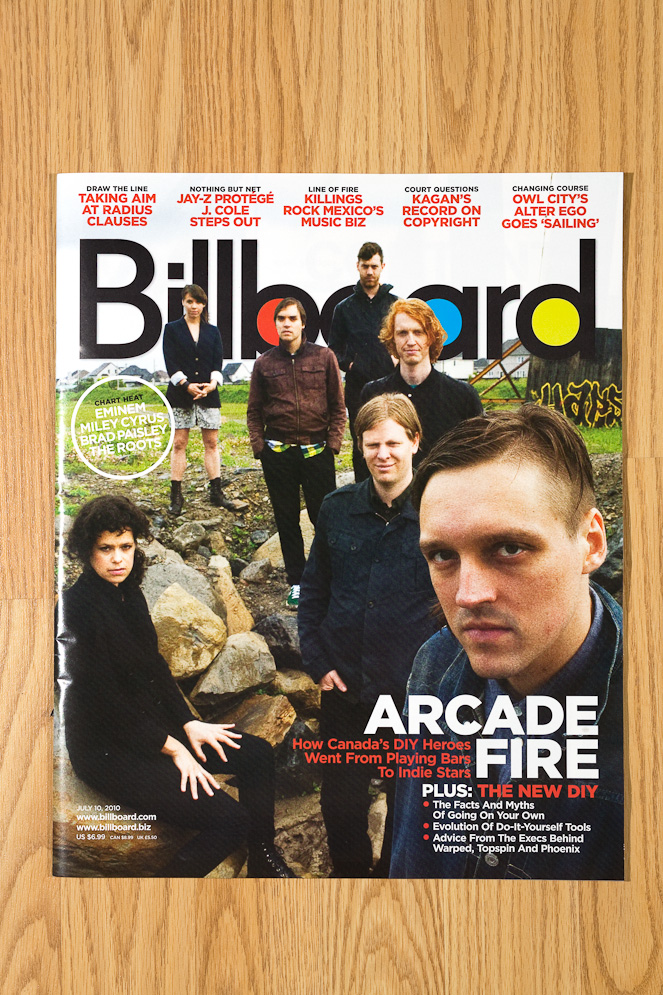
Images shot in a river on Win's property featured on the cover of French magazine les inrockuptibles
Hear two songs from the forthcoming album on NPR.
iPad bringing tangible hope for magazines
via aphotoeditor

screenshot from ipadinsider
In the nine days since it launched its $4.99 iPad application, Wired has sold close to 73,000 downloads—almost as many copies as the magazine sells on the newsstand—spending five days in the No. 1 paid app slot. All the attention leading up to the launch has contributed to a 20% spike in advertising pages in the first half of the year, compared with the same period a year earlier, making the magazine Condé Nast's biggest gainer, according to Media Industry Newsletter.
Read more at http://www.crainsnewyork.com/article/20100606/FREE/306069969


